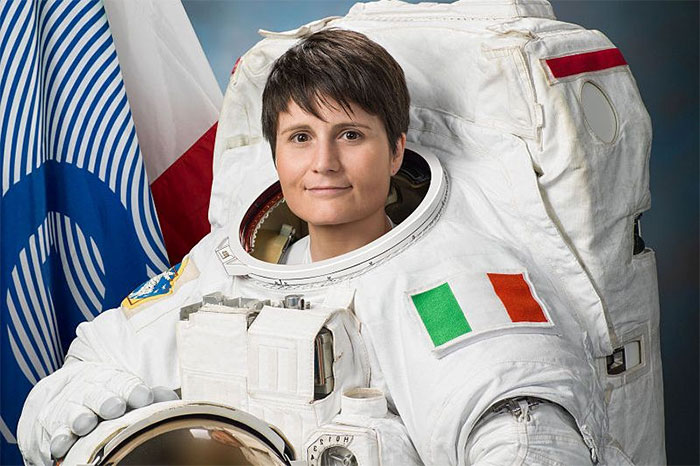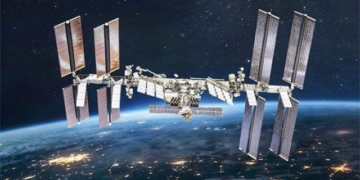A NASA project has indicated that women are well-suited for space exploration. However, until now, very few female astronauts have been sent into space.
According to unofficial statistics, over 50 female astronauts from 7 countries have completed spaceflights worldwide. However, this number is still small compared to the potential that female astronauts could achieve.
In fact, it seems that female astronauts have never been ranked highly on NASA’s priority list. Throughout its history in aerospace, NASA employed all-male crews for many decades.
For example, among the 566 people who have traveled into space, only 65 (11%) of them are women. The reason is that NASA has restricted sending female astronauts into space, believing that only men can fully undertake this great mission, along with the rather “funny” excuse of not having spacesuit sizes for women.

To date, there are over 50 female astronauts who have completed spaceflights.
“Spacesuits are generally more suited to the bodies of male astronauts than female ones. Since women are smaller in stature, finding a suitable suit for going into space is quite a challenge,” a NASA member once stated.
Women Are More Suitable for Space Travel
We are often familiar with the image of tall, strong men in oversized space exploration suits. However, recent studies have pointed out several compelling reasons that show women actually possess more advantages in this specialized field.
Specifically, women weigh less than men, so when carrying a large payload into space, it leads to a series of consequences, such as needing to redesign spacecraft, consuming more fuel, and incurring higher logistical costs. Therefore, the presence of female astronauts could help mitigate these issues.
Women consume fewer calories and use fewer resources: Research has shown that women require 15 to 25% fewer calories than men, even while performing a similar workload with equivalent efficiency. Additionally, because women (on average) are smaller than men, they also produce less waste (CO2 and bodily excretions), which helps the recycling systems of spacecraft operate more efficiently.
Space conditions affect men and women differently: Due to the effects of microgravity and radiation, astronauts may experience some negative impacts on physical health. Recent studies have indicated that men are less affected by “space motion sickness” during spaceflights than women, but they are at a higher risk of experiencing faster hearing loss and higher rates of vision problems.
Women often outperform men in situations requiring prolonged isolation. Moreover, when stepping into the space environment, astronauts must be exposed to cosmic radiation, which can be very harmful to the body, increasing the risk of cancer and other issues.
Some studies suggest that women are favored with special mental qualities that are quite ideal for exploratory missions in space. In a survey at the International Space Station (ISS), a NASA researcher found that male astronauts frequently experienced mood swings and irritability more than female astronauts in certain challenging situations.
Similarly, in a study of 349 people in the British Antarctic Survey Project, 20% of the women surveyed exhibited “special adaptability” in the long term, effectively enduring long-term isolation. In contrast, men performed better in short-term missions aimed at specific goals, while women excelled in longer missions with unexpected challenges.
In the struggle for gender equality, women have proven that they are capable of doing anything—including conquering space—showing that even the sky is not the limit for their success.
Famous Female Astronauts
- Valentina Vladimirovna Tereshkova, Soviet nationality (born March 6, 1937) – the first female astronaut in the history of human space exploration. On June 16, 1963, she flew into space aboard Vostok 6, completing 48 orbits around the Earth over nearly 3 days.
- Svetlana Savitskaya (born August 8, 1948, in Russia) – the second woman to fly into space, 19 years after Valentina Tereshkova. She flew aboard the Soyuz T-7 spacecraft to the Salyut 7 space station in 1982. While on the Salyut 7 space station, Savitskaya became the first woman to conduct a spacewalk on July 25, 1984, spending 3 hours and 35 minutes outside the station.
- Sally Kristen Ride (born May 26, 1951) – the first American woman to fly into space as part of the Challenger crew on the STS-7 mission on June 18, 1983. Prior to her, two Soviet women, Valentina Tereshkova in 1963 and Svetlana Savitskaya in 1982, had already been to space.
- Shannon Matilda Wells Lucid (born January 14, 1943) – an American astronaut who holds the record for the longest time spent living and working in space by a woman. In 1996, she lived and worked in space for 188 days, including 179 days aboard the MIR space station. Overall, she completed 5 spaceflights on the Space Shuttles: Discovery (1985), Atlantis (1989, 1991, and 1996), and Columbia (1993).
- Roberta Bondar (born December 4, 1945) – a medical doctor and the first female astronaut from Canada to travel to space. She was trusted by NASA in the field of space medicine. She flew into space aboard NASA’s Discovery shuttle during the STS-42 mission, conducting experiments in the IML-1 space laboratory from January 22-30, 1992.
- Chiaki Mukai (born May 6, 1952) – a physician and the first female astronaut from Japan, who has completed two spaceflights. Her missions included STS-65 in July 1994 aboard the Columbia shuttle (USA) and STS-95 in 1998 aboard the Discovery shuttle (USA). Mukai spent a total of 28 days in space.
- Eileen Marie Collins (born November 19, 1956) – the first female pilot and commander of a U.S. space shuttle. She has a total of 38 days and 8 hours in space, having completed 4 flights on the Discovery (STS-63 mission in 1995), Atlantis (STS-84 mission in 1997), Columbia (commanding STS-93 mission in 1999), and Discovery (STS-114 mission in 2005).
- Claudie Haigneré (born May 13, 1957) – the first female astronaut from France, who worked at the European Space Agency (1999-2002). Haigneré spent 16 days aboard the MIR space station in 1996. In 2001, she became the first European woman to visit the International Space Station (ISS).
- Yi So-Yeon (born June 2, 1978) – the first female astronaut from South Korea, who flew to the ISS aboard Russia’s Soyuz TMA-12 on April 8, 2008. She is the second Asian woman to travel to space after Chiaki Mukai.
Elon Musk Reveals the Interior Structure of the Super Heavy Rocket





















































